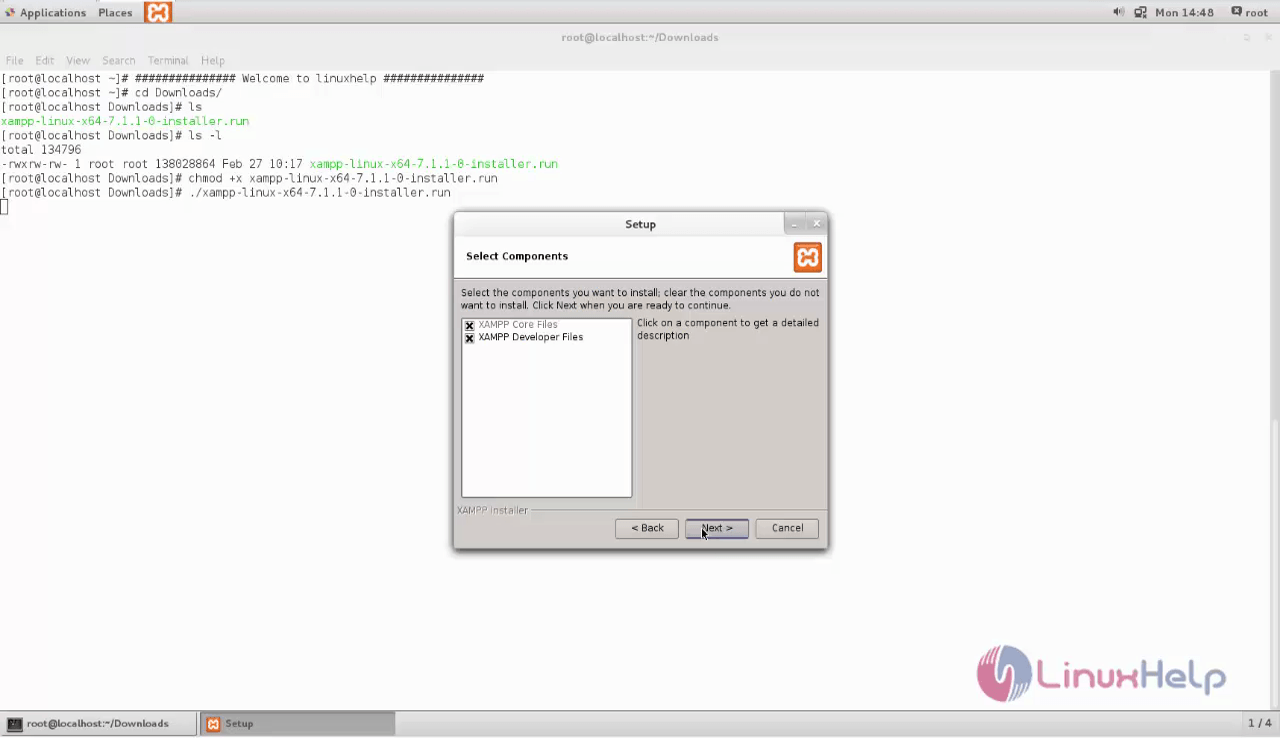Actually it’s not only XAMPP that has changed, but there are many client tools that come to use MariaDB as the default database. MariaDB replaced MySQL as the default database system in the CentOS 7 repositories. At this time, we will discuss how to install and secure MariaDB on CentOS 7. In this guide, we'll get a LAMP stack installed on an CentOS 7 VPS. A 'LAMP' stack is a group of open source software that is typically installed together to enable a server to host dynamic websites and web apps. Download the XAMPP. We suggest you to download latest stable XAMPP package for. XAMPP is an easy to install Apache distribution containing MariaDB, PHP, and Perl. Just download and start the installer. XAMPP is an open source multi-platform software stack. It contains Apache, MariaDB, PHP and Perl and provides a suitable environment for testing Apache MYSQL, PHP and Perl projects. Step 1: The package is not available in Centos 7 default repository. Download latest stable XAMPP binary from the site for Linux distribution.
Install Xampp On Centos 7
The database utility, phpMyAdmin, is used for managing MySQL databases through a graphical web-based interface. It can be configured to manage a local database (on the same system), or a remote database (over a network).
This tutorial will show you how to install phpMyAdmin and configure basic security on CentOS 7.
- LAMP (Linux, Apache, MySQL, PHP) stack installed on the server.
- Access to a sudo user account with root privileges (ability to use the sudo command).
- The CentOS 7 operating system.
- The YUM update manager, which is a default component of CentOS 7.
- A command prompt with root access. To open a command prompt: Menu > Applications > Utilities > Terminal.
- A text editor. Vim is included with most Linux installations or you can use Nano.
(If you’ve already installed EPEL, you can skip this step.)
CentOS 7 does not have access to phpMyAdmin in its default software repository. You’ll need to get access to the EPEL repository – the Extra Packages for Enterprise Linux.
Type the following at the command prompt, then hit enter:
Once that operation finishes, it’s a good idea to refresh and update the EPEL repository:
PhpMyAdmin requires an active and running Apache web server. To install Apache on CentOS use the command:
Verify the status of Apache by running with the command:
You can also enter your server’s IP address in a browser and a testing screen should display:

Install Xampp On Centos 7 64
To install PHPMyAdmin on CentOS, enter the command:
Once the system executes the command, PHPMyAdmin is installed and ready to launch.
Your new software installation includes a default Apache configuration file. You’ll want to make some changes to that configuration to prevent unauthorized access. Here are two common ways of restricting access to unauthorized users.
This method can be used to grant remote access to a single workstation. By default, phpMyAdmin is configured so that the server it’s installed on has access. This change lets you allow or restrict access to specific IP addresses of different or additional computers.
The file is located at /etc/httpd/conf.d/phpMyAdmin.conf. Type the following at your command prompt:
Inside the config file, you should see four (4) lines that refer to “Require IP” or “Allow IP.” By default, they should be set to 127.0.0.1, which is the IP address referring to the system you are working on. To allow other systems to access this phpMyAdmin application, add (or change) these numbers to the IP address of the computer you want to grant access to.
Once you’ve made the changes, save the file.
Open phpMyAdmin.conf using a text editor:
Near the top, you should see two lines:

“Alias” is how the internet will see your phpMyAdmin configuration. Since the default configuration is an easy target for bots and hackers, consider changing the alias setting. Just put a ‘#’ sign before the existing entries so the program sees them as comments, rather than instructions. Then add your own line:
Now, when you go to your login screen, you’ll have to type https://IP_OR_DOMAIN/MySecretLogin (or whatever you choose) to gain access.
Once you’re finished making changes, save the file.
Regardless of which configuration you use, you’ll need to restart the Apache service to see your changes:
To check if phpMyAdmin is working correctly, enter your servers IP and /phpmyadmin in a web browser. For example:
You should see the PhpMyAdmin login screen.

Note: Fill in the location of your own public server information in place of “IP_OR_DOMAIN.' You’ll need to collect this information from your particular server configuration. It’ll usually be your domain name or the IP address of your server.
PhpMyAdmin is a widely-used application for managing databases. If followed closely, you should fine this guide on how to Install PhpMyAdmin on CentOS 7 very useful.
Centos 7 Install Php 7.4
Next, You Should Also Read:

Comments are closed.